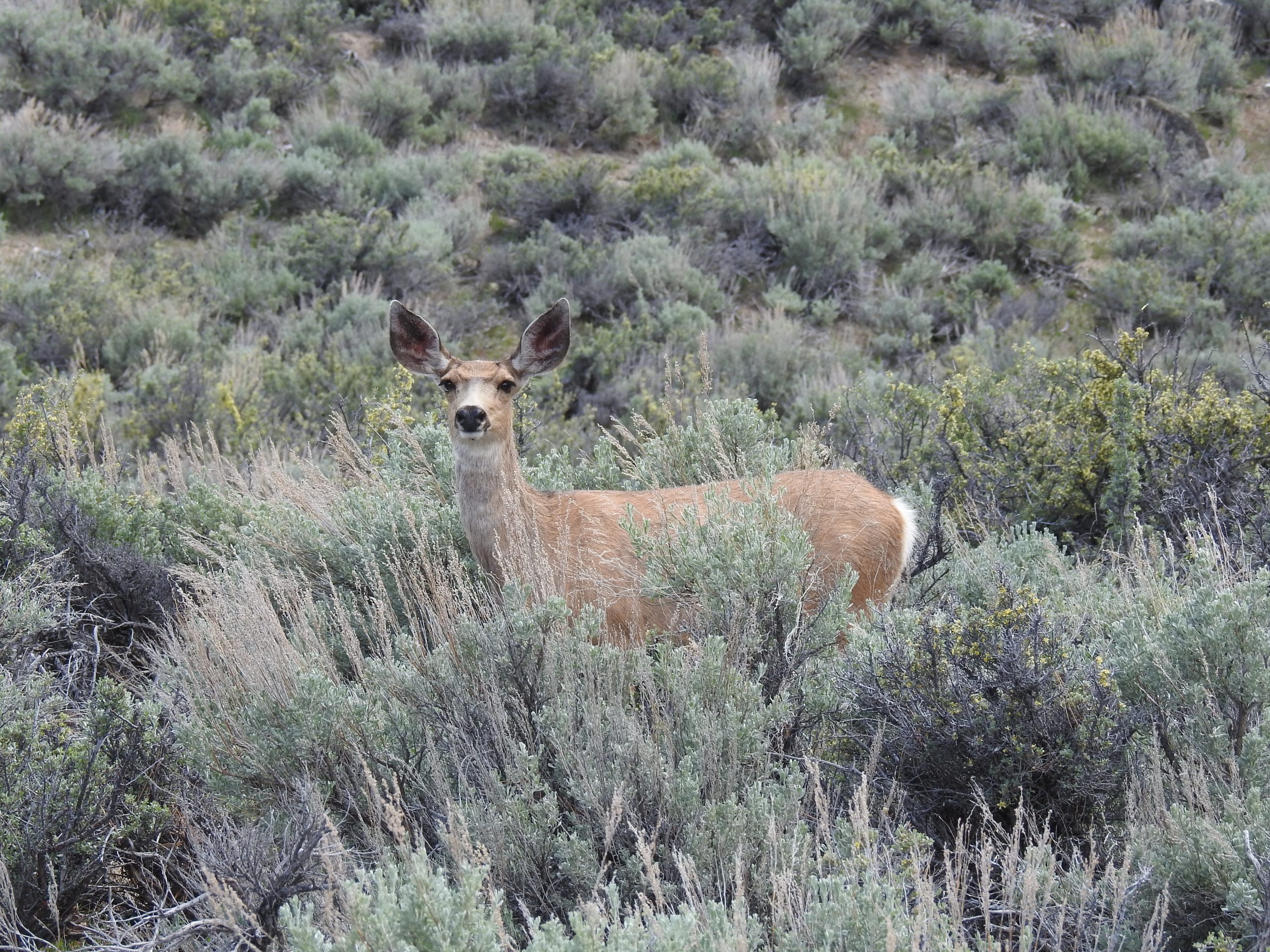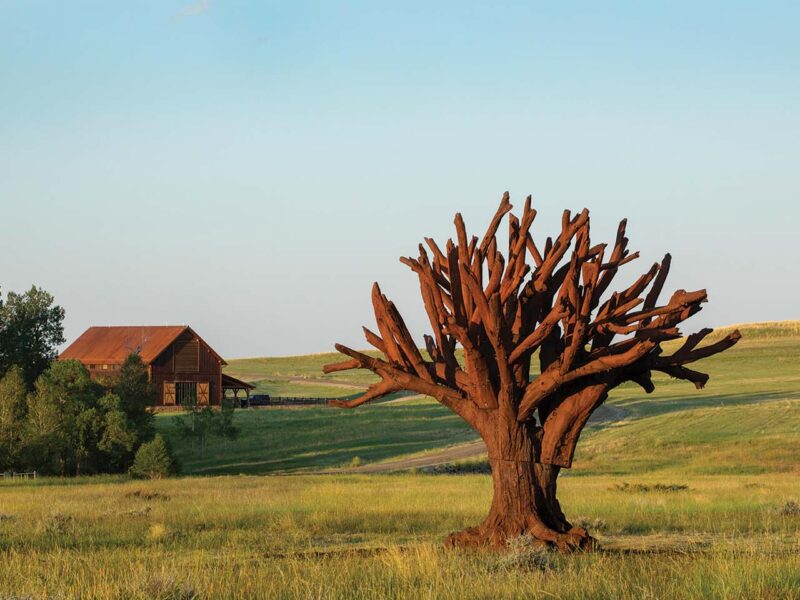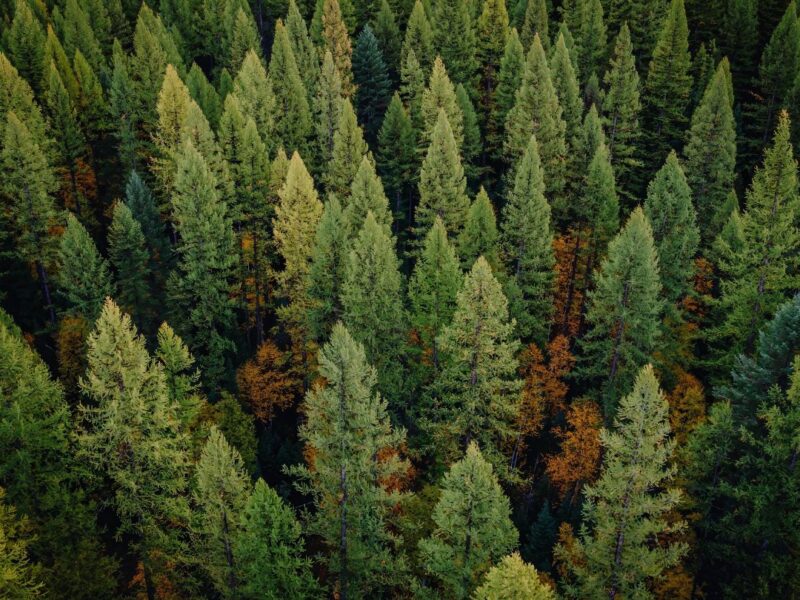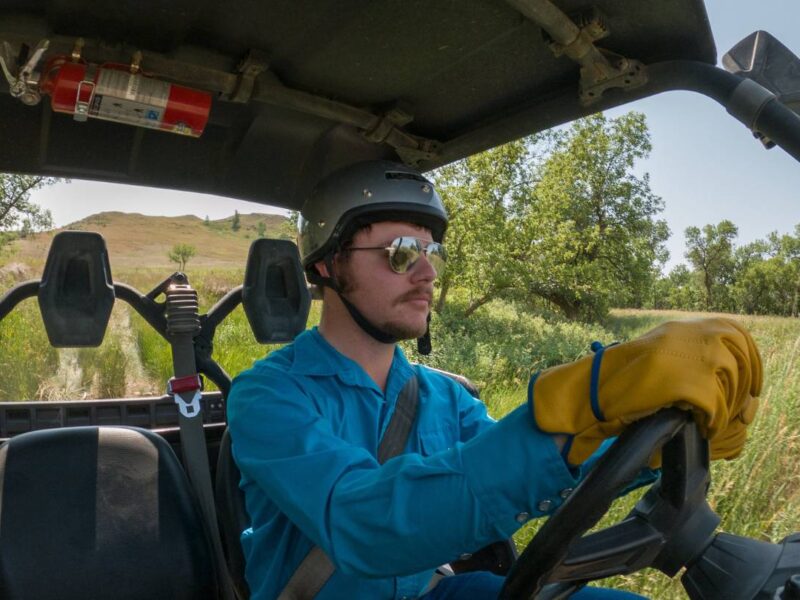Managing for Quality Mule Deer on Working Lands
I have had the pleasure of working with Rick Danvir, former wildlife manager at Deseret Western Ranches, on a number of different projects over the last seven years. If you’re interested in wildlife management on working lands and you don’t know Danvir, you should. I sat down with him to discuss managing quality mule deer including the benefits for landowners, the key components of quality deer management, and the applicability of this management to other game species.
Hallie Mahowald: In your experience managing wildlife on private lands, what do you see as the benefits for landowners in managing for quality mule deer populations and habitat?
Rick Danvir: Western working ranches have the management capability to conserve wildlife habitat along with agricultural commodity production if they desire to do so. Mule deer are key to integrating wildlife management into the mix. In general, habitat that is good for mule deer is also good for a lot of other wildlife species. The key is to manage healthy mule deer populations in balance with the land and as part of your broader ranch management strategy and plan. Most ranchers are interested in trying to manage livestock in a way that provides for healthy deer and upland bird populations, as long as the ranch bottom line doesn’t suffer. Integrating the needs of big game and upland birds adds value in the form of enjoyment, as well as improved hunting programs, and also shows that wildlife conservation and livestock production are not mutually exclusive.
HM: What does good deer management look like?
RD: Quality deer management is all about maintaining healthy, free-roaming deer in balance with the land. Let bucks mature and express their full antler potential. That means you have to think about the principles of herd management, habitat management, hunter management and herd monitoring. These principles, which were originally established for managing for white tail deer in the Southeast, can also be applied to managing for mule deer on Western rangelands. Successful deer managers understand and focus on these interrelated principles.
HM: Let’s talk more about these principles. When you say herd management, what do you mean and what should landowners and managers consider?
RD: Herd management boils down to keeping an appropriate herd size, age and sex distribution. The top things managers should consider in herd management are body condition, buck maturity, deer abundance and disease.
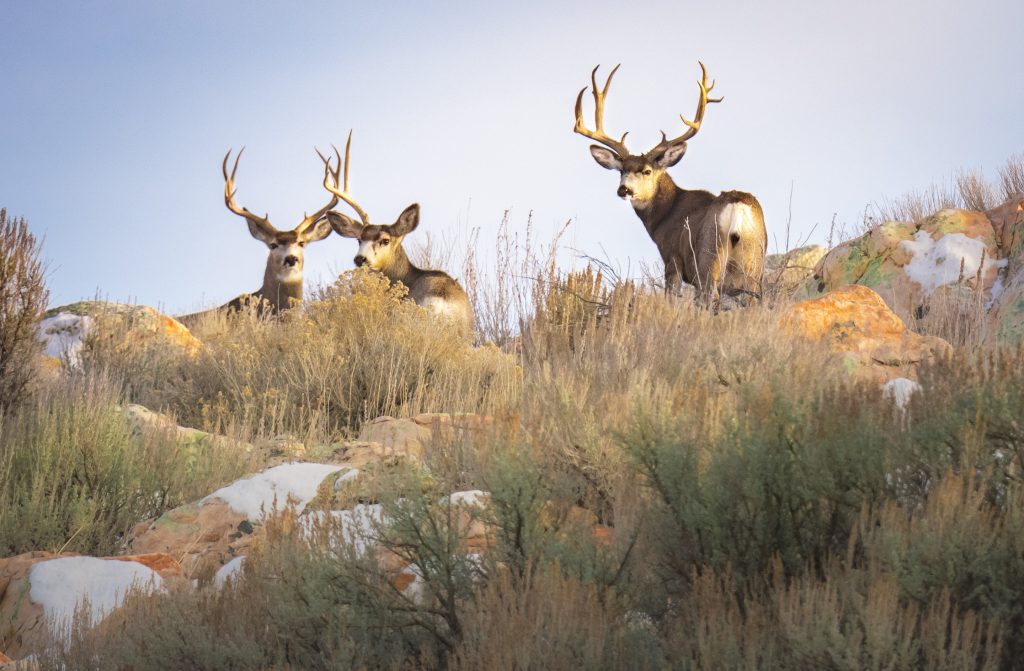
Maintain deer in good body condition throughout the year. The better a deer’s body condition, the better they are able to withstand environmental challenges like drought, deep snow, predators and disease.
Harvest mature bucks. Based on the best science available, quality deer management guidelines recommend letting young bucks mature. Hunts should be designed to harvest not just the highest scoring, mature bucks, but also mature bucks with smaller antlers.
More deer is not always better. Deer abundance can also influence body condition, growth rates, maturation, antler quality, fawn production and survival. Although deer certainly compete with livestock and elk at times, buck mule deer compete for resources most directly with other buck mule deer. Although mule deer overabundance is uncommon these days, comparing deer condition and production with population abundance can indicate whether herd size is balanced with the habitat.
Disease can affect herd health and management strategy. Keeping herd numbers at or below objective, keeping deer and water sources broadly distributed across the landscape and avoiding practices that concentrate deer may help reduce the spread of disease.
“The top things managers should consider in herd management are body condition, buck maturity, deer abundance, and disease.”
HM: What about genetics? Can genetics be managed in a herd and do they matter?
RD: Genetic research in whitetail deer offers some insight here. In short, studies of whitetail deer have largely failed to demonstrate that culling young bucks with spikes or smaller antlers improves the herd’s antler quality down the road. In part, this is because antler genetics is inherited from does as well as bucks, and nutrition primarily determines how fully a buck’s genetic potential is expressed.
HM: Clearly, habitat plays a critical role in mule deer quality. From your perspective, what is the best habitat and what conditions are needed to support quality deer?
RD: Mule deer can thrive in a wide range of habitats across the West, from the deserts of Mexico to the mountains of Montana, feeding on several hundred different species of plants. There are, however, some habitat management goals and conditions important throughout mule deer range. Mule deer constantly adjust their daily diet based on which plants are the most digestible and nutritious. Grazing and other habitat management should be aimed at maintaining a variety of plant species and growth forms (grasses, forbs and shrubs) on healthy soils. While cattle and elk can maintain body condition on dry grasses, mule deer cannot. To thrive, mule deer need deeper rooted upland range forbs and shrubs, plus the lush vegetation of well-managed springs, streams and meadows. Maintaining a diverse mix of green, growing plants allows mule deer to select the optimum forage to meet their protein and energy needs as well as to obtain the micronutrients and secondary plant compounds necessary to their health, production and antler growth.
HM: Let’s move on to hunter management. How should hunters and hunting be managed to support quality mule deer?
RD: Hunter management really comes down to hunter education and thinking about hunting as part of herd management. If you just turn guys loose, they will likely go out and shoot the biggest buck they can find. However, as mentioned above, for long-term herd health, you want the hunters on your property to shoot deer that are fully mature and not just the highest scoring, mature bucks, but also mature bucks with smaller antlers. Mule deer need to reach full body size, which happens at maturity around 4-6 years old, to reach their full antler potential. Instead of looking at score, hunters need to be looking at age. This is where the ability to age on the hoof comes into place. Learning to age live bucks is the best way to ensure that bucks aren’t harvested prematurely. I recommend educating hunters to identify a mature animal or offering guided hunts with guides who can age on the hoof. Another role that hunting plays in herd management is in population management. You want to harvest mature trophy and management bucks along with females, as needed, to avoid overabundance.
HM: You mentioned that the fourth principle of quality deer management is herd monitoring. Monitoring for what and why?
RD: Monitoring informs management. If you aren’t monitoring your herd, then you aren’t able to manage effectively. Individual deer monitoring should include body condition estimates of live and harvested animals, plus field-dressed weights and/or brisket fat depths. Herd monitoring data should include periodic estimates of deer density, herd size and age/sex composition. Identifying seasonally important deer use areas, such as frequently used migration, fawning, summer and wintering areas, can be particularly useful in planning grazing. By counting, classifying and collecting harvest data to inform management, mule deer can be managed to allow the best possible antler quality to be expressed.
HM: It’s clear you have a wealth of knowledge around mule deer management. Recognizing you have managed other species of wildlife in your work, how are these quality deer management principles applicable to other game species like elk and pronghorn?
RD: A population management takeaway from mule deer management that applies to elk and pronghorn would be letting the males mature while removing enough mature males and females to keep the population at or below ecological and social carrying capacity, whichever is most constrained. While mule deer mature at about 4-6 years old, elk mature at 7-8 years and pronghorn mature at 3-4 years.
Habitat wise, a takeaway applicable to elk, pronghorn and many other species is to integrate wildlife habitat needs with livestock production needs into a single management strategy and plan and within that plan to graze appropriately. My advice is to plan to rest 20% to 30% of the ranch from livestock each year, rotating the rest through time. I like multiple pastures, 5-15 pastures per herd of livestock. From a wildlife perspective, I like grazed pastures to be a bit messy, with some patches grazed harder than others. This creates a diversity of opportunities for the hundreds of species on any given ranch. Build wildlife-friendly fences and drinkers, and if possible host a couple of prairie dog towns. If you focus on creating habitat for your native deer and upland birds, take good care of your meadows, wetlands, riparian corridors and aspen, you’ll create a home for many species.


